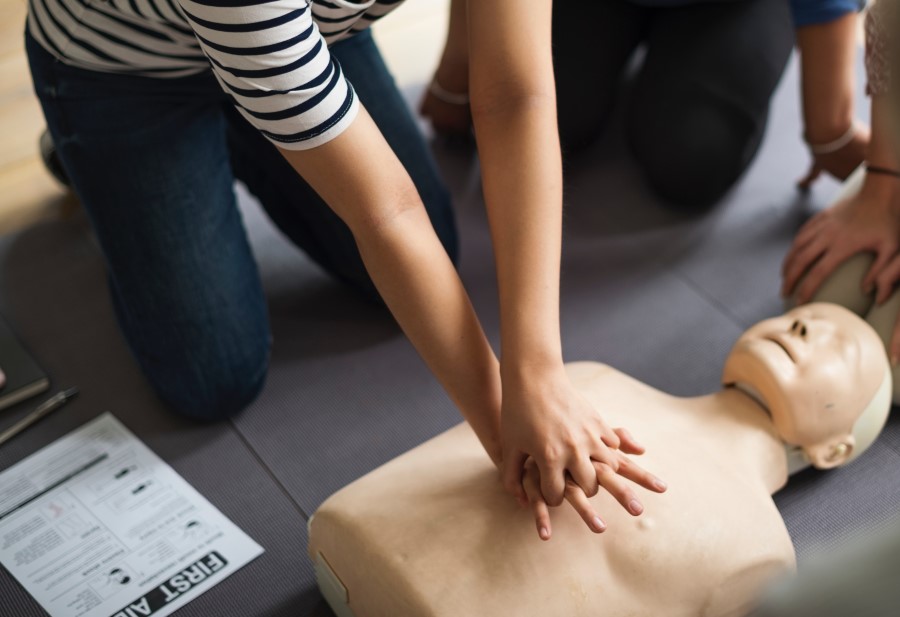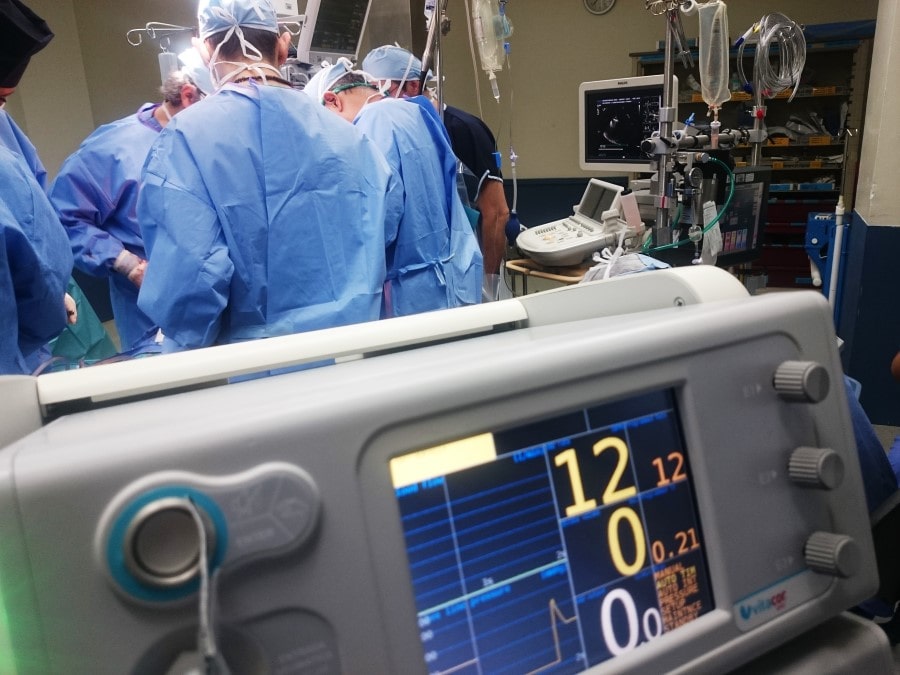In a event where a person has stopped breathing, every second counts. After you have taken the measures to ensure that a person in a life-threatening situation is out of harm’s way, but still unconscious or non-responsive, you must be prepared to give CPR to the individual. These steps will walk you through the process of performing chest compressions. In all scenarios, make sure that 911 or other local emergency services are called to ensure trained medical assistance will be sent to aid you.
1. If an Automated External Defibrillator is available:
If an local AED device is available, retrieve it and use it first before attempting CPR. Most AEDs currently give verbal instructions guiding you in how to use it, and will deliver a shock to the person’s heart which stops all other activity in an attempt to restore a normal heartbeat if needed. The AED can improve the chances a person will survive even before administering CPR techniques.
2. If you are not trained in CPR techniques:
Even if you are not familiar with CPR, remember that even doing something without complete knowledge is much better than doing nothing at all in a life-threatening situation. In such a case, the American Heart Association recommends that you provide hands-only CPR until medical personnel arrive: meaning that you provide uninterrupted chest compressions of 100 to 120 compressions per minute. You do not have to attempt rescue breathing if you are not trained to do so – this will greatly assist medical personnel taking over. If you were formerly trained in CPR but have forgotten techniques since then, follow this advice as well.
3. If you are trained in CPR techniques:
If you had access to a AED, see if that restores a pulse or breathing. Whether or not you had access to an AED, in the event that there is no breathing or heartbeat after 10 seconds of assessment than life-saving measures are needed. Begin CPR administration, starting with 30 uninterrupted compressions before administering two rescue breaths.
4. The C.A.B. Procedure:
In all events, the American Heart Association recommends the “C.A.B.” method in that order: Compressions, Airway, Breathing. The main reminder is that compressions should always be administered first before attempting to restore breathing.
5. Performing Compressions:
When preparing to perform compressions, make sure the person is laying down with their back on a firm surface. Position yourself correctly by kneeling next to the person’s neck and shoulders. Put the heel of one hand over the center of the person’s chest, with the other hand on top. Ensure your shoulders are above the placement of your hands and that your elbows are straight, and then begin compressions. You must push down approximately 2 inches (or 5 centimeters), but no more than 2.4 inches (or 6 centimeters) per each compression to compress the person’s chest, pushing straight down with your entire upper body strength.
6. The Rate of Performing Compressions:
Perform at least 100 to 120 compressions per minute while administering. If you are not trained in further CPR measures, continue performing compressions until there is movement from the person or until medical assistance arrives.


